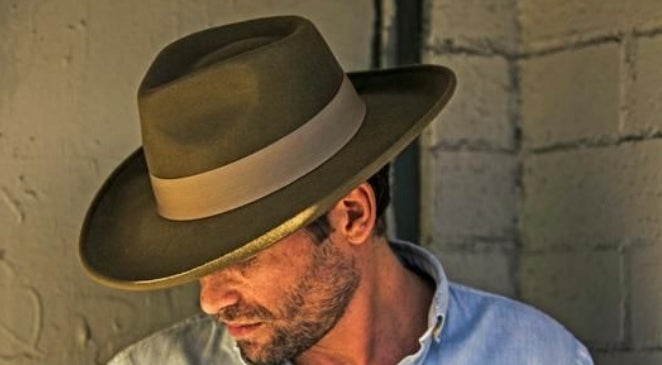
The Ultimate Guide to Felt Hats: Materials, Styles, and Timeless Elegance for Men
Felt hats have long been a staple in men's fashion, offering both functionality and timeless style. Whether you're looking for a classic fedora, a rugged outdoor hat, or a sophisticated porkpie, understanding felt materials and styles will help you make the perfect choice. This comprehensive guide explores everything you need to know about felt hats - from their rich history and manufacturing processes to the various styles that continue to define men's fashion today.
Understanding Felt: The Foundation of Quality Hats
Felt is a remarkable non-woven textile produced by matting, condensing, and pressing fibers together. This unique manufacturing process creates a material that's both durable and versatile, making it ideal for hat-making. The term "felt hat" refers to any headwear crafted from this tightly interwoven fibrous material, known for its water-resistant properties and ability to hold shape exceptionally well28.
The Composition of Felt Hats
Felt hats can be made from various materials, each offering distinct characteristics:
-
Wool Felt: The most traditional and common material, wool felt is made from sheep's wool. It provides excellent warmth, breathability, and a soft texture. Wool felt hats like the Dasmarca TONY melange wool felt MOD style porkpie hat showcase the material's ability to create structured yet comfortable headwear9.
-
Fur Felt: Considered premium in quality, fur felt (typically from rabbit or beaver) offers superior durability, water resistance, and a smoother finish. These hats maintain their shape better than wool felt and are often used in high-end fedoras and trilbies.
-
Blended Felt: Combining wool with synthetic fibers like polyester or nylon enhances durability and reduces cost while maintaining much of wool's desirable properties.
-
Synthetic Felt: Made from materials like acrylic or polyester, synthetic felt hats are more affordable and often more resistant to weather elements, though they may lack the breathability of natural fibers8.
The Manufacturing Process
The creation of a quality felt hat involves several meticulous steps:
-
Material Selection: Choosing the right wool or fur blend based on the desired hat quality and characteristics.
-
Matting and Felting: Fibers are agitated in hot water and soap solution until they interlock tightly. This process, called felting, shrinks the material while increasing its density.
-
Blocking: The felt is stretched over a wooden or metal hat form (block) to create the basic shape.
-
Shaping and Stiffening: Additional processes give the hat its final form and structure.
-
Finishing: This includes trimming, adding linings, sweatbands, and any decorative elements like ribbons or feathers8.
The density and quality of the felt directly impact the hat's durability, water resistance, and overall appearance. Higher-quality felts have a smoother finish and maintain their shape better over time.
Classic Felt Hat Styles for Men
Felt hats come in various styles, each with its own history and fashion statement. Understanding these different styles will help customers choose the perfect hat for their needs and personal aesthetic.
1. The Fedora
Characteristics:
-
Pinched crown with a center crease
-
Medium to wide brim (typically 2-3 inches)
-
Often features a grosgrain ribbon band
Best For: Everyday wear, business casual outfits, and vintage-inspired looks
The fedora remains one of the most iconic felt hat styles, offering a perfect balance of sophistication and casual charm. Originally popularized in the early 20th century, modern fedoras come in various felt weights suitable for different seasons.
2. The Trilby
Characteristics:
-
Similar to fedora but with a shorter, sharply upturned brim
-
Higher, more tapered crown
-
Often made with lighter felt materials
Best For: Fashion-forward looks, spring/summer wear, and pairing with slim-fit suits
The trilby offers a more contemporary take on the classic fedora shape, popular among younger wearers and those preferring a sharper silhouette.
3. The Porkpie
Characteristics:
-
Flat crown with a slight indentation around the top
-
Short, flat brim that's typically turned up slightly
-
Often features a thin ribbon band
Best For: Jazz and mod style enthusiasts, casual smart outfits
Exemplified by the Dasmarca TONY melange wool felt MOD style porkpie hat, this style gained popularity in jazz culture and offers a distinctive, slightly rebellious aesthetic9.
4. The Western/Cowboy Hat
Characteristics:
-
Wide brim (often 4+ inches) for sun protection
-
High crown with various crease styles
-
Typically made from sturdier felt for outdoor use
Best For: Country and western wear, outdoor activities, ranchers
While often associated with straw materials in summer, felt western hats are essential for colder months, providing warmth and protection.
5. The Outback/Adventure Hat
Characteristics:
-
Medium-width brim (often with one side slightly turned up)
-
Ventilated crown for breathability
-
Made from weather-resistant felt blends
Best For: Outdoor enthusiasts, travelers, safari-style outfits
Modern versions like the dullbo Dullbo All-Weather Hat incorporate functional features such as ventilation, sunglasses holders, and cooling agent containers, making them ideal for active use6.
6. The Homburg
Characteristics:
-
Formal stiff felt construction
-
Curved brim with a distinct "gutter" crease around the crown
-
Often in dark colors with a grosgrain band
Best For: Business formal occasions, winter formalwear
The Homburg represents the most formal option in felt hats, often seen at high-end events and with business suits.
Choosing the Right Felt Hat: A Buyer's Guide
Selecting the perfect felt hat involves considering several factors beyond just style. Here's what customers should keep in mind:
1. Seasonal Considerations
-
Fall/Winter: Opt for heavier wool or fur felts in darker colors that provide warmth. Styles like fedoras, Homburgs, and western hats work well.
-
Spring/Summer: Choose lighter-weight felts or blends in lighter colors. Porkpies and trilbies are excellent warm-weather options.
2. Head Shape and Face Proportions
-
Round Faces: Choose hats with taller crowns and medium-width brims to elongate the face.
-
Oval Faces: Most styles work well; consider personal style preferences.
-
Square Faces: Soften angles with rounded crowns and slightly curved brims.
-
Long Faces: Balance proportions with wider brims and lower crowns.
3. Outfit Coordination
-
Formal Wear: Opt for classic colors like black, gray, or dark brown in structured styles like Homburgs or formal fedoras.
-
Casual Wear: Experiment with colors, textures, and more relaxed styles like porkpies or outback hats.
-
Business Casual: Medium-brim fedoras or trilbies in neutral tones work well.
4. Quality Indicators
When examining a felt hat's quality, look for:
-
Density: Higher-quality felts feel substantial yet flexible.
-
Finishing: Check for smooth surfaces without visible loose fibers.
-
Lining: Quality hats feature breathable linings that protect the interior.
-
Sweatband: A well-attached leather or fabric band ensures comfort and durability.
Caring for Your Felt Hat
Proper maintenance extends the life of a felt hat significantly. Share these care tips with your customers:
-
Storage: Always store hats on their crown or on a proper hat stand to maintain shape. Avoid hanging by the brim.
-
Cleaning: Use a soft brush to remove dust. For stains, consult a professional hatter as water can damage felt.
-
Weather Protection: While quality felt is somewhat water-resistant, prolonged exposure to moisture can damage the hat. Use a waterproofing spray for added protection.
-
Reshaping: Steam can be used to gently reshape felt hats, but this is best done by professionals to avoid over-shrinking.
-
Rotation: Avoid wearing the same hat daily to allow it to air out and maintain its shape.
The Modern Appeal of Felt Hats
While felt hats have historical roots dating back to ancient Greece and Rome8, they've experienced a resurgence in modern fashion. Today's wearers appreciate them for:
-
Versatility: From rugged outdoor adventures to formal events, there's a felt hat for every occasion.
-
Sustainability: Natural wool and fur felts are biodegradable and often produced with traditional, low-impact methods.
-
Personal Expression: With various styles, colors, and customization options, felt hats allow wearers to showcase their individuality.
-
Functionality: Beyond style, quality felt hats provide UV protection, warmth, and weather resistance.
Highlighting Featured Products
In your online store, consider featuring these types of felt hats that appeal to the American market:
-
Classic Wool Fedora - A timeless staple suitable for various occasions
-
Outdoor Adventure Hat - Like the functional dullbo Dullbo with its all-weather features6
-
Mod-Style Porkpie - Such as the Dasmarca TONY melange wool felt hat for fashion-forward customers9
-
Luxury Fur Felt Trilby - For customers seeking premium quality
-
Rugged Western Felt - Perfect for customers with country or western lifestyles
Conclusion: The Enduring Legacy of Felt Hats
Felt hats represent more than just headwear—they're a fusion of craftsmanship, tradition, and personal style. From the classic fedora to functional outdoor designs, felt's unique properties make it an ideal material for hats that combine form and function. By understanding the different materials, styles, and care requirements, your customers can invest in felt hats that will serve them well for years to come.
As you curate your collection, consider offering a range that includes both timeless classics and contemporary interpretations to appeal to various tastes and needs. Highlight the craftsmanship behind each piece, the quality of materials, and the versatility of felt as a premium hat-making material. With proper education about these aspects—as provided in this guide—your customers will appreciate the value and style that a quality felt hat brings to their wardrobe.
